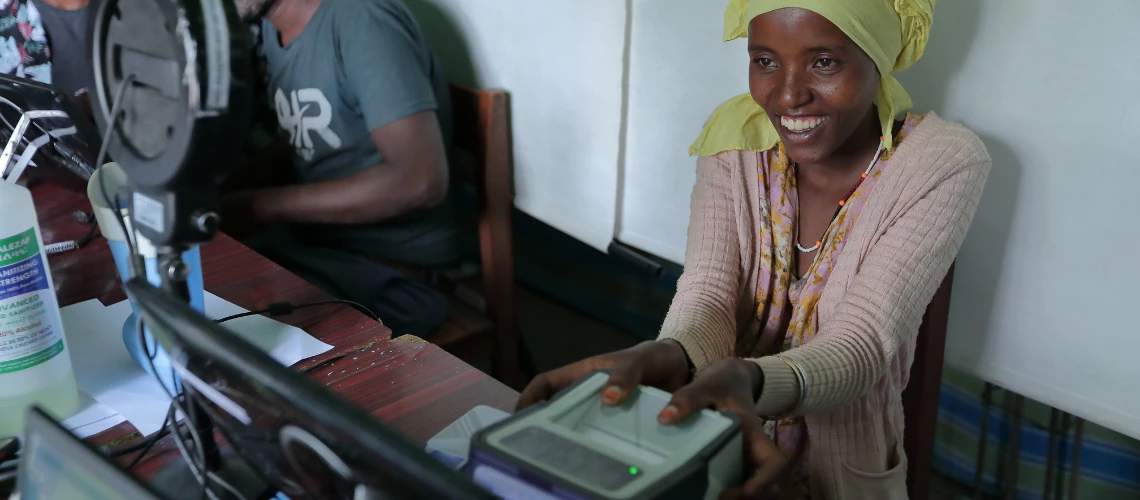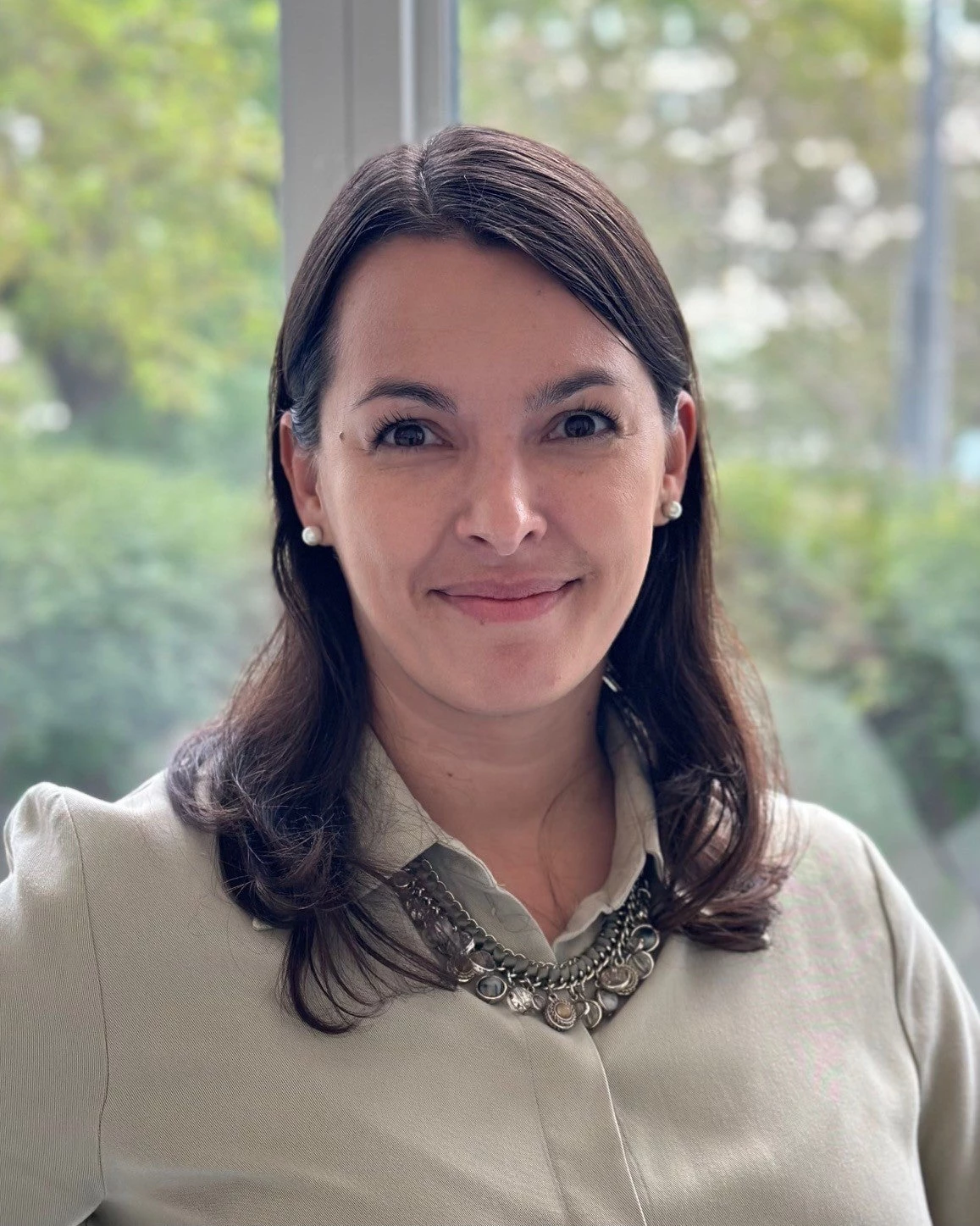 An African woman smiles broadly while getting her biometrics done at the national identity office
An African woman smiles broadly while getting her biometrics done at the national identity office
Imagine not being able to prove who you are—no birth certificate, no passport, no driver’s license or national ID.
Having proof of legal identity or other officially recognized identification (ID) matters for equitable, sustainable development. It is a basic right and often provides the key to access services and opportunities, whether that is getting a job, opening a bank account, or receiving social assistance payments. The growth of digital services has further increased the need for secure and convenient ways to verify a person’s identity online and remotely.
Yet according to new estimates, some 850 million people globally do not have an official ID (let alone a digital one).
The World Bank’s Identification for Development (ID4D) Initiative works to tackle the lack of access to identification challenge in multiple ways, starting with counting the uncounted.
ID4D has produced estimates of global ID coverage since 2016 as part of its Global Dataset. Extensively updated in 2021-2022, the estimate now includes brand new data sources that paint the clearest picture yet of global ID ownership.
ID4D partnered with the Global Findex survey to obtain representative survey data on adult ID ownership and usage. With this new individual-level data, as well as a significantly expanded set of administrative data provided by ID authorities, estimates released at the end of 2022 indicate that just under 850 million people around the world do not have an official ID (the full methodology is described in the ID4D Global Coverage Estimate report).
Who are the 850 million without an ID?
People most affected by gaps in the accessibility of civil registration and identification live primarily in low- and lower middle-income economies in Sub-Saharan Africa and South Asia.
Many are members of marginalized groups and over half of those without proof of identity are children whose births have not been registered. Despite some progress, women living in low-income countries (LICs) are still 8 percentage points less likely to have an ID than men. The gap is also significant for other vulnerable groups: adults in LICs are less likely to have an ID when they are below 25 years old, have only primary schooling or less, are out of the workforce, are in the bottom 40 percent of the income distribution, or live in rural areas.
Causes and consequences of the ID coverage gap
Multiple barriers and challenges contribute to low ID ownership.
Among adults living in LICs, 46 percent say they do not have an ID because of documentary requirements, 44 percent because of the distance to registration points, and 40 percent because of the prohibitive costs involved in obtaining one . Such barriers are often compounded for persons with disabilities, sexual or gender minorities, women and girls, and other vulnerable groups. In some cases, these groups face legal barriers as well as practical ones.
Not having an ID can negatively impact access to services and the fulfilment of rights.
Globally, around 1 in 3 adults without an ID reported difficulties in using financial services, receiving financial support from the government, applying for a job, or voting in elections. Nearly 40 percent of adults without an ID reported difficulties obtaining a SIM card or mobile phone service, while around 25 percent had problems receiving medical care.
But simply having an ID is not enough—quality also matters.
Although around 850 million people do not have essential forms of official identification, that is not to say that the other 7 billion people around the globe have good ID. Good ID is inclusive, trusted, verifiable, and fit-for-purpose , as outlined by the guidance in The Principles on Identification for Sustainable Development and described in detail in the ID4D Practitioner’s Guide. Further data and insights about key features of ID and civil registration systems across the world today are forthcoming as part of this update.
Key lessons for policymakers
- Governments and other stakeholders must deliberately work to reduce or eliminate barriers that continue to prevent people from obtaining official or legal proof of their identity. This includes removing inequalities, onerous requirements, and fees, both by reforming relevant laws and regulations and by improving business processes and customer services standards.
- Proactive, comprehensive engagement and communication with communities, local leaders, and civil society organizations is also essential. Robust information and education campaigns, frequent involvement with civil society, and sensible grievance redress mechanisms are needed to build trust and engagement.
- Monitoring and improving access to ID requires better, regular data collection. Countries and development partners must invest in improving data collection on identification systems through multiple channels, including censuses and other survey efforts.
Clearly, there is much room for improvement in terms of both ID system coverage and quality. Therefore, the World Bank and its ID4D Initiative are providing tailored support to strengthen the accessibility, design, and governance of identification and civil registration in 57 countries. These efforts strive to help those without an ID obtain one and those with IDs to take full advantage of their credentials.




Join the Conversation